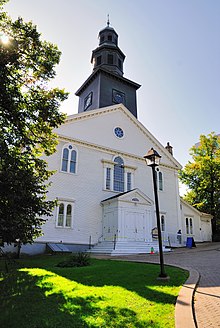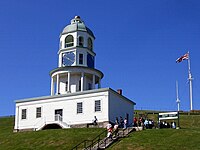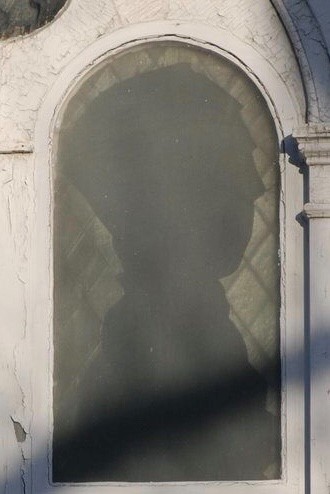
Charles Inglis was an Irish clergyman who was consecrated the first Anglican bishop in North America, although technically of the Diocese of Nova Scotia.
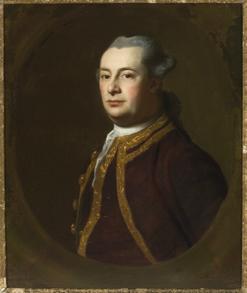
Michael Francklin or Franklin served as Nova Scotia's Lieutenant Governor from 1766 to 1772. He is buried in the crypt of St. Paul's Church (Halifax).

William Johnston Almon was a Nova Scotian physician and Canadian parliamentarian. He was the son of William Bruce Almon.
Sir Edward Kenny, was a Canadian politician and businessman. He co-founded the Union and Merchants' banks and served as Mayor of Halifax. He was a Conservative senator from 1867 to 1876.

Richard Westmacott RA – also sometimes described as Richard Westmacott III – was a prominent English sculptor of the early and mid-19th century.

The Old Burying Ground is a historic cemetery in Halifax, Nova Scotia, Canada. It is located at the intersection of Barrington Street and Spring Garden Road in Downtown Halifax.

Richard John Uniacke was an abolitionist, lawyer, politician, member of the Nova Scotia House of Assembly and Attorney General of Nova Scotia. According to historian Brian Cutherburton, Uniacke was "the most influential Nova Scotian of his day.... His faith in Nova Scotia's destiny as a partner in a great empire was only to be equalled by Joseph Howe." He devoted 49 years to public service in Nova Scotia. He fought in the American Revolution and later sought to emancipate Catholics and Black Nova Scotians who were slaves in Nova Scotia. He is buried in the crypt of St. Paul's Church. His substantial estate is preserved as the Uniacke Estate Museum Park at Mount Uniacke.
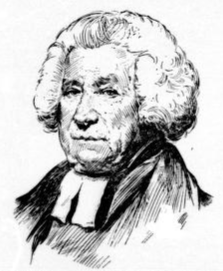
Rev Dr John Breynton was a renowned minister in Halifax, Nova Scotia, Canada.
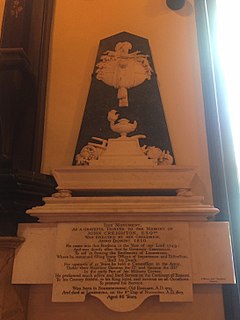
John Creighton was one of the founding fathers of Lunenburg, Nova Scotia. He led the settlement through the turbulent times of Father Le Loutre's War, the French and Indian War and the American Revolution. He represented Lunenburg County in the Nova Scotia House of Assembly from 1770 to 1775. After establishing the town, he lived the rest of his life in the village until he died fifty-four years later.

Henry Hezekiah Cogswell was a lawyer, political figure and philanthropist in Nova Scotia. He represented the town of Halifax in the Nova Scotia House of Assembly from 1818 to 1820. He was president of the Royal Acadian School.

St. George's (Anglican) Round Church is a wooden round church in the neo-Classical Palladian style located in Halifax Regional Municipality in Downtown Halifax. Construction on the church began in 1800 thanks in large part to the financial backing of the British royal family. The church’s primary architect remains a mystery, but Prince Edward, Duke of Kent and Strathearn was highly influential & involved in the design process. It is located at the corner of Brunswick and Cornwallis Streets in the North End district. The church was designated a National Historic Site of Canada in 1983 given its associations with the early history of Halifax and its Palladian architecture.

Robert Field (1769–1819) was a painter who was born in London, England, and died in Kingston, Jamaica. According to art historian Daphne Foskett, author of A Dictionary of British Miniature Painters (1972), Field was "one of the best American miniaturists of his time." During Field's time in Nova Scotia at the beginning of the nineteenth century, he was the most professionally trained painter in present-day Canada. He worked in the conventional neo-classic portrait style of Henry Raeburn and Gilbert Stuart. His most famous works are two groups of miniatures of George Washington, commissioned by his wife Martha Washington.

The Halifax Club is a private club in Halifax, Nova Scotia that was established in 1862. The club serves as a meeting place for business-minded men and women. It is a place where they can "meet, toast the day's successes, dine or simply relax in a warm atmosphere of history and tradition." The Club has a substantial art collection including a self-portrait of Benjamin West and a painting by Robert Field. The Club was built by George Lang.

Dr. Eliza Ritchie was a prominent suffragist in Nova Scotia, Canada.

Little Dutch (Deutsch) Church is the second oldest building in Halifax, Nova Scotia after St. Paul's and was built for the Foreign Protestants.

The Carleton is a building on Argyle Street in Halifax, Nova Scotia, built in 1760 as the home of Richard Bulkeley. Apart from two churches, Bulkeley's home is the oldest building in Halifax, Nova Scotia (1760). It was reported to have been made from the ruins of Fortress Louisbourg. Since 1786 his residence has been known as "The Carleton".

St. John's Anglican Church was the first church established in Lunenburg, Nova Scotia, Canada (1754). It is the second Church of England built in Nova Scotia, and is the second oldest remaining Protestant church in present-day Canada. Early on 1 November 2001, St. John's church suffered significant damage by fire. It was restored and re-dedicated June 12, 2005.

Jean-Baptiste Moreau was first minister at St. John's Anglican Church (Lunenburg) (1753-1770) and one of the founding fathers of the community. He was one of two missionaries who first arrived in Halifax with Edward Cornwallis (1749) and served at St. Paul's Church (Halifax). His wife had the first child born in Halifax and was named Cornwallis after the Governor. Then in 1753 he was sent to help establish Lunenburg, Nova Scotia. Rev Moreau served the community throughout the French and Indian War. He reported to Society for Propagation of the Gospel (SPG) in London, "…the number massacred by Indians in Lunenburg District during the War was 32." He learned the Mi'kmaw language and is reported to have baptised a number of Mi'kmaq children. He is buried in the crypt of St. John's Anglican Church

Thomas Shreve was a Loyalist during the American Revolution and later served as the first rector of St. George's Anglican Church (1787) and then became a prominent minister of St. John's Anglican Church (Lunenburg), Nova Scotia.

William James Almon was a doctor and loyalist who left New York City for Nova Scotia during the American Revolution (1776). He is reported to have attended to the wounded at the Battle of Bunker Hill. He later served at the capture of New York City. He was the surgeon mate of the 4th battalion, Royal Artillery, which served in the Battle of Monmouth. In 1780, he returned to Halifax. He became the surgeon general of the Nova Scotia militia. His last year of practice he joined his son Dr. William Bruce Almon. Along with Duncan Clark and John Halliburton, Almon served as physician to Edward Augustus and were part of the royal social circle in Halifax.
